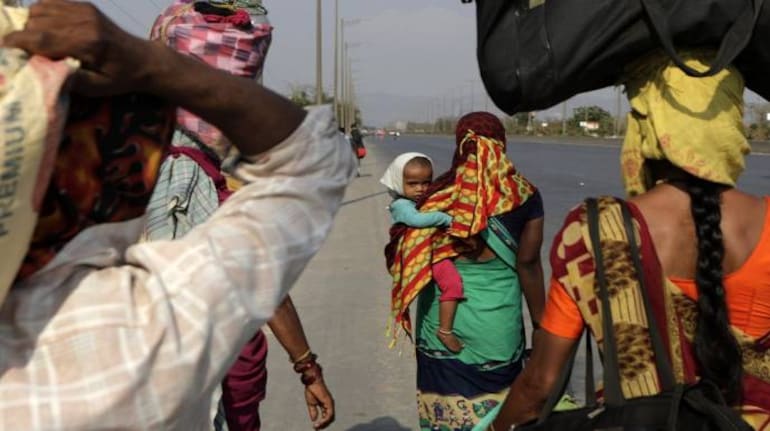



The National Hawker Foundation, in a letter dated May 4 to Civil Aviation Minister Hardeep Puri, stated that the condition of street vendors and hawkers was worsening by the day.
The letter says the legally mandated street vendor survey has not been done everywhere in India and that only 10 percent of the vendors have been surveyed, thereby not capturing the actual size of the business. Except for the small percentage of vegetable and fruit sellers, all are out of business with absolutely no liquidity.
Street vendors are part of India's enormous informal sector, that has found itself denied a livelihood because of the nationwide lockdown imposed to tackle the COVID-19 outbreak.
After the further extension of lockdown till May 17 was announced on May 3, most factory owners and industries were left guessing, as the Noida administration had not issued any specific instruction on how manufacturing units are supposed to function.
"There is no clarity as to how the passes for the workers and promoters will be available, whether they will be available online or offline. Things are not very clear," said Mukesh Mohan Gupta, President, Chamber of Indian Micro, Small and Medium Enterprises.
According to Gupta, Noida Entrepreneurs Association was assured that the passes would be available online, but there is still no clarity over it.
Apart from a lack of clarity on how to resume work, a more pressing concern for business owners is the lack of availability of labour force in Indian cities and towns.
On April 29, the Union Home Ministry allowed state governments to transport migrant workers, pilgrims, tourists, students, patients and others stranded due to the lockdown to their respective states from different parts of the country.
"Since most of the labourers believe that lockdown may get extended to an indefinite period, there is shortage of labour," Gupta said.
Though the government is now gradually allowing resumption of economic activities, it comes with riders. Factories that have remained shut can now restart work, only if they follow the requirements of maintaining social distancing and having less workforce.
Construction activities that were ordered shut overnight because areas with large gatherings were to be emptied out, can now resume work under certain conditions.
Most migrant labourers who have left for their villages have to depend on makeshift rural jobs till the next sowing season begins. But those workers who have stayed back in the cities, expecting some relaxation in lockdown, would be keen on taking up the jobs that would now be made available.
"So in a sense, there would be two types of economic forces that would be working. The MSMEs would be looking for a low-wage supply of labour and at the same time, migrant workers, who would have otherwise been working in informal spaces like in trading or large companies as contract workers, would find an opportunity to get jobs in the MSME sector. So in that sense, there would be a supply-demand match," said KR Shyam Sundar, professor at Xavier School of Management in Jamshedpur.
The Census 2011 pegs the total number of internal migrants in the country (accounting for inter- and intra-state movement) at a staggering 139 million.
Uttar Pradesh and Bihar are the biggest source states, followed closely by Madhya Pradesh, Punjab, Rajasthan, Uttarakhand, Jammu and Kashmir, and West Bengal; the major destination states are Delhi, Maharashtra, Tamil Nadu, Gujarat, Andhra Pradesh and Kerala.
With the majority of this workforce having departed from sites of production, resumption of work may not be as smooth as it seems.
"Most of those who worked in my factory used to live in nearby slums. But they were mostly from other states. Now even if I am able to begin operations, I don't know how the workforce logistics would work out," said the owner of a garments business, who has a factory in Ghaziabad.
Several MSMEs require skilled labour and most of these businesses are driven by promoters.
"The promoter is involved in marketing and payments, but it is the skilled labour which is aware of the workings of material and machinery, stock and supply orders. To retrieve the skilled and semi-skilled workforce is a challenge," said Gupta.
(With inputs from Pramiti Lonkar)
Discover the latest Business News, Sensex, and Nifty updates. Obtain Personal Finance insights, tax queries, and expert opinions on Moneycontrol or download the Moneycontrol App to stay updated!
Find the best of Al News in one place, specially curated for you every weekend.
Stay on top of the latest tech trends and biggest startup news.